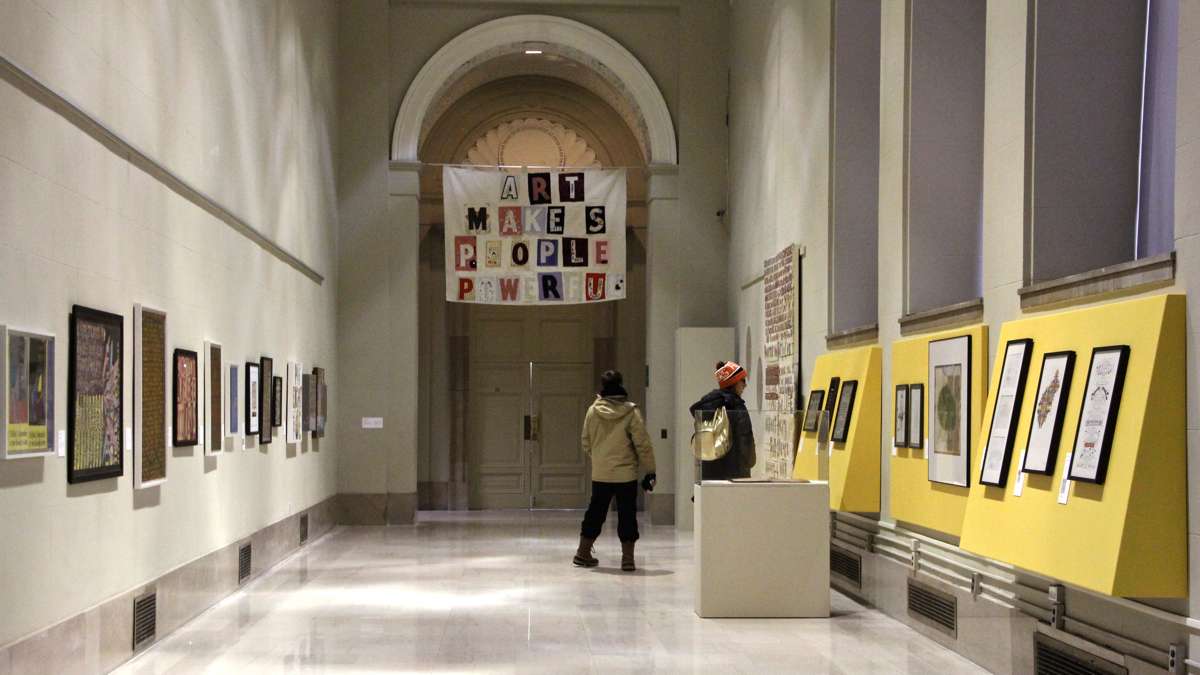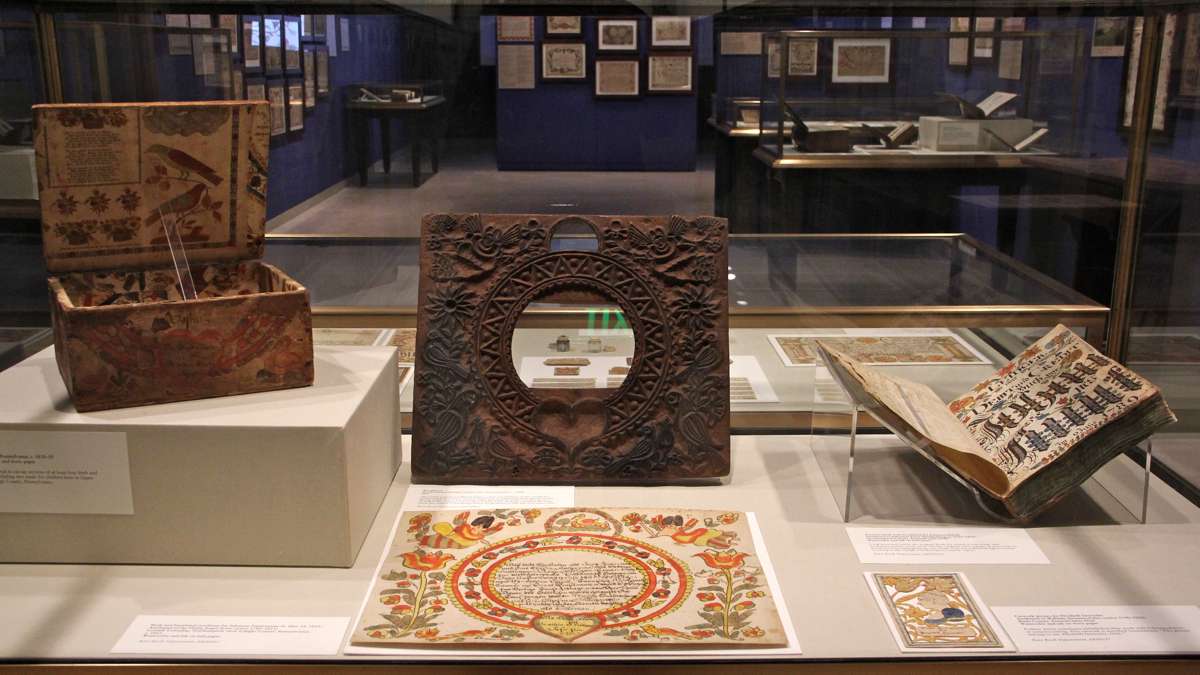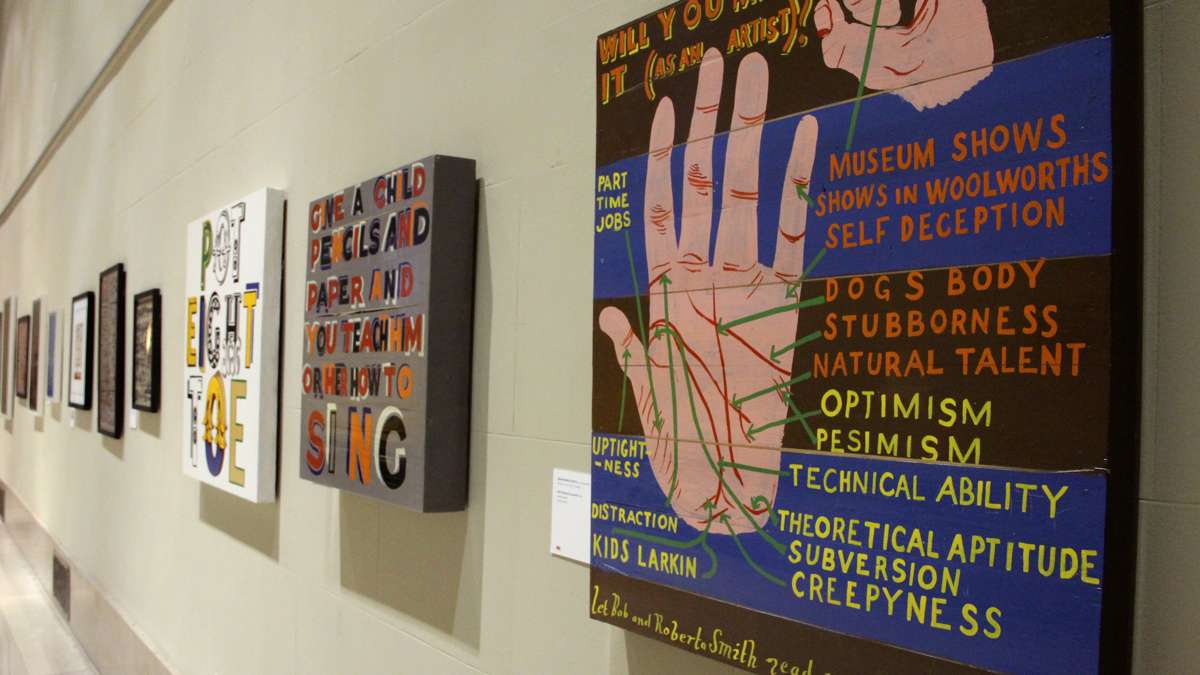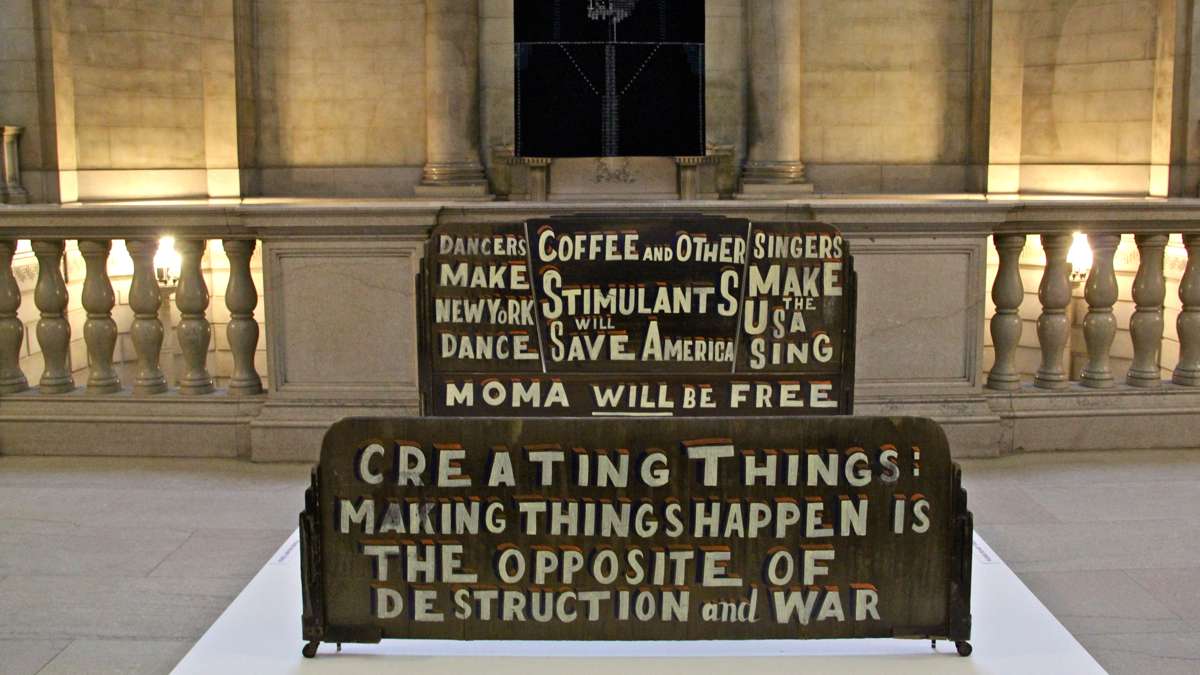Contemporary artists find resonance in old folk tradition
“When you make a tweet and put an image with it, it has a lot more power,” said British artist Bob and Roberta Smith. “That’s been going on for centuries.”
“Bob and Roberta Smith” is the art name of Patrick Brill, based in London. He is one of the artists in the Free Library of Philadelphia’s exhibition “Word and Image: Contemporary Artists Connect to Fraktur.”
Spread across the first and second floors of the Main Branch on the Parkway, the show accompanies the library’s exhibition of historic fraktur in the third-floor floor rare book department, “Framing Fraktur.”
Like most of the half-dozen artists in the show, Smith knew next to nothing of the Pennsylvania Dutch decorative tradition before he got a call from the curator, Judith Tannenbaum. He discovered an unrealized fraktur sensibility in his work.
In the 1980s, when Smith was living in New York City, he often traveled through the South to look for folk art. He liked the way some “outside” artists incorporate text in their work to communicate literally and directly with the viewer.
“That’s what fraktur means to me. It is art made with a purpose, commemorating births, weddings, and deaths – and everybody in the process knows that purpose,” said Smith. “In contemporary art that’s a very rare thing.”
The grand lobby of the library is lined with six large woodblock prints, made by brothers Gert and Uwe Tobias of Germany, of oversized abstractions of embroidery patterns. On the second floor, the exhibition starts with a bedframe headboard and footboard found on the streets of New York by Bob and Roberta Smith, on which he painted messages about the benefits of art.
The pieces in the show follow two basic premises related to fraktur: the pieces needed to incorporate text, and are related to a folk art tradition.
Philadelphia artist Anthony Campuzano, who also knew very little about fraktur beforehand, makes paintings and drawings based on language and stories, which he reworks until they become visual abstractions.
“I wasn’t too familiar with it, but a lot of elements of fraktur are similar to elements I do,” said Campuzano. “Making eyes move around the field, telling stories, repetition, and mark-making.”
One of the artists who had some foreknowledge of fraktur is Canadian Marian Bantjes, who has a background in typesetting. The work “fraktur” comes from the German word for a typesetting font, wherein the letters appear to be fractured.
Bantjes made several pieces specifically for this show, turning the letter shapes and symbols of fracture into abstract design elements. She also included previously hand-drawn certificates that lend the show a bit of humor.
In one, a personal friend of Bantjes – a certified lawyer in Australia and England – had to go through a third certification process to practice law in Canada. Bantjes was dismayed when, upon completion, her friend received nothing celebratory from the certification board. So she invented a certificate to honor her friend, in roughly the shape of a lace doily.
Another piece is a highly decorative, hand-drawn copy of a spam email, wherein a man from Nigeria asks you to help him out of a jam with huge rewards, if you first give him your bank account information. It’s the kind of message that has clogged your inbox a thousand times.
“But they all have this strangely antiquated way of speaking. It’s almost Victorian English,” said Bantjes. “This one reads: ‘My dear, can we work together? With my humble fidelity and enthusiastic mind, I greet you.” That is so not this century.”
“Word and Image: Contemporary Artists Connect to Fraktur” is on view until June 14.
WHYY is your source for fact-based, in-depth journalism and information. As a nonprofit organization, we rely on financial support from readers like you. Please give today.












